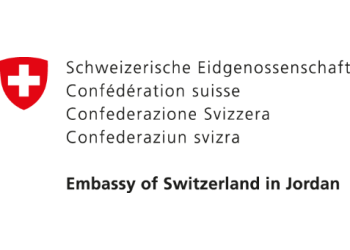The proposed truce rests between anticipation of a ceasefire and fears the occupation will not comply

AmmanNet – Hadeel Al-bas
With the anticipation of an announcement of a ceasefire in the Gaza Strip, there are fears from observers of a lack of commitment from the Israeli side to the terms of the agreement, and this concern is increasing with the occupation’s statements regarding the continuation of military operations in Gaza, just hours after Hamas responded to the proposal.
The developments came along with the arrival of US Secretary of State Anthony Blinken to Israel as part of his diplomatic tour of the region, while Israeli PM Benjamin Netanyahu renewed his commitment to continuing the war in Gaza.
This came after the Hamas movement presented its reply to the proposed Qatari and Egyptian framework, after consulting the factions and leaders in the movement, explaining that it has dealt with the proposal in a positive manner, to ensure a comprehensive ceasefire, end to the aggression and siege, and an exchange of prisoners.
Security expert and military analyst Dr Nidal Abu Zeid explained that it’s in the light of the repeated losses the Israel side have suffered throughout the war in the Gaza Strip, that makes this initiative an important step towards ending the conflict.
Despite the Qatari and Egyptian sponsors not revealing many details about the initiative, initial indications point towards an early Hamas approval, and the details have been formulated in a way that paves the way for an agreement that ends the confrontations between the resistance and Israel, according to Abu Zeid.
Political analyst Bassam Badarin believes that the timing of this truce comes in a tense political context, both internally and externally. However, the resistance was able to intelligently use the agreement to its political advantage, not fully granting it its political blessing, meaning it played skilfully to achieve political gains among all parties involved.
Details of the agreement.
The ceasefire proposes, according to descriptions from sources close to the talks, a 40-day truce allowing civilians among the detainees still in Gaza to be released. Then comes two subsequent stages to allow the handing over of soldiers and bodies, in exchange for the release of Palestinians detained in Israeli prisons.
The Hamas movement suggested a plan for a ceasefire that would quell the bombing the Gaza Strip has been subjected to for more than 4 months, leading to an end to the war, in response to a proposal conveyed last week by Qatari and Egyptian mediators which has the support of United States and Israel.
A draft document indicates that Hamas’ proposal includes three stages, each lasting 45 days. The proposal suggests an exchange of Israeli detainees held by the Palestinian resistance factions detained on October 7th for Palestinian prisoners.
It also stipulates the beginning of the reconstruction of Gaza, and the complete withdrawal of the Israeli occupation forces, and the exchange of bodies and remains.
According to Hamas’ draft response, “Israeli detainees including women, children (under the age of 19), the elderly, and the sick, will be released in exchange for all prisoners in the occupation prisons, including women, children, and the elderly (over 50 years of age), and the sick, who were arrested until the date of signing this agreement, without exception.”
It indicates that the remaining male detainees with be released during the second phase, and the corpses and remains in the third stage, and by the end of the third stage Hamas expects the two sides to reach an agreement on ending the war on Gaza.
The movement says in an appendix to the proposal that it wants the release of 1500 Palestinian prisoners, including 500 of them with life sentences.
The truce would also increase the flow of food and other aid to civilians in Gaza who face hunger and severe shortages of basic supplies.
Israel’s rejection of the agreement.
Although Hamas responded to the Qatar and Egyptian proposal with specific conditions, with guarantees for the implementation of this agreement from Egypt, Qatar, Turkey, Russia, and the United Nations, there are fears that the occupation will veto this agreement in favour of a return to war in Gaza.
These fears come as a result of the occupations violation of all agreements concluded between it and the Palestinians over the previous years, in addition to its violation of various international laws concerned with protecting the rights of the Palestinian people.
Abu Zeid believes that this point will be not be absent from the resistance movement, considering that the delay in approving this proposed initiative was mainly due to it, and there he believes Hamas has set necessary conditions by emphasizing the presence of international and regional guarantees to prevent the Israeli side from taking any military or sudden steps.
Meanwhile, Badarin believes that Netanyahu’s response of his adherence to continuing the war in the Gaza strip is not new, and his goal is to preserve himself and his allies. Approving any of the provisions related to the flow of aid or the redeployment of the American army, and agreeing to a comprehensive ceasefire may end his rule without any guarantees of him staying in power.
He believes Blinken’s visit to the region coincided with the announcement of Hamas’ response, which indicates the existence of an American agenda, but it is unclear and ambiguous, and that the goal of Blinken’s visit is to put pressure of the right-wing Israeli government.
Axios quoted Israeli officials and informed sources as saying that the United States, along with Britain, France, Germany, and Italy, wish to announce agreed-upon steps within a few weeks, as Israel and the Lebanese Hezbollah party pledge to ease tensions along the border.
Axios sources report that the five Western countries are expected to announce potential economic benefits to boost the Lebanese economy, with the aim of facilitating the reaching of a deal with the Hezbollah party.












































